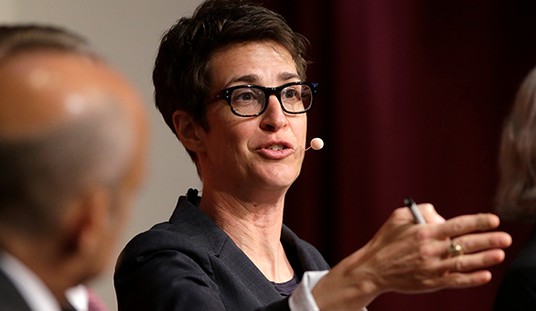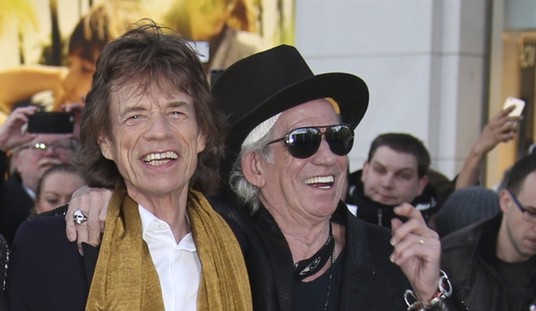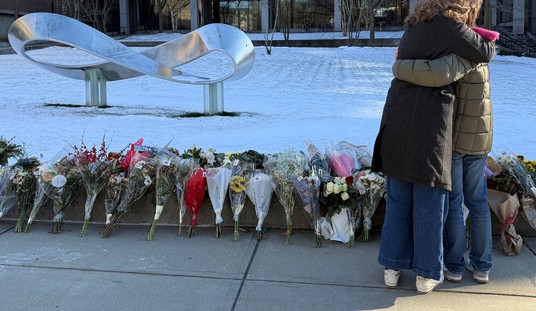House to House: An Epic Memoir of War by Staff Sergeant David Bellavia is the most compulsively readable book yet published about the Battle of Fallujah.
I’m leaving for Fallujah myself in two weeks and will continue book-blogging this as a sort of prologue to my own dispatches to come. My work will need contrast. I don’t expect to be embroiled in fire fights every day, and it would be absurd to read my stories — whatever they turn out to be — as a complete picture of the American experience there.
This is the city where the anti-American Sunni insurgency was born. Its support ran the gamut from secular Baathists to radical Islamists and included disgruntled average Iraqis in between. The Marines mostly cleared Fallujah of insurgents in April, 2004, after a lynch mob strung up the mutilated bodies of Blackwater contracters from a bridge. But U.S. forces later withdrew, and Fallujah was taken over by the insurgents again. General Petraeus’s surge strategy of Clear, Hold, and Build wasn’t in place yet.
Fallujah degenerated into a totalitarian hole ruled by fanatics, and the Army and Marines had to go in and clear it again in November of the same year. The city had been emptied of civilians and was effectively a ghost town occupied by jihadists from all over the place.
Sometimes I worry that Iraq will turn into a California-sized Gaza, but the truth is that some parts have been in worse shape already.

Click the image to order from Amazon.com
Here is Bellavia describing the city as he and his fellow “front-line bullet chewers,” as he called them, are preparing to strike:
Fallujah is a city designed for siege warfare. From the studs to the minarets, every goddamned building is a fortress. The houses are minibunkers with ramparts and firing slits cut into every rooftop. The mosques are latter-day Persian castles with concrete walls three feet thick. Within those walls, the courtyards offer perfect ambush points from every window. Even the shops and the local markets are fortified. Block after block, Fallujah is a sophisticated deathtrap.
Architecture aside, the insurgents have had months to prepare for this battle. They’ve dug fighting positions, mined the streets, booby-trapped the houses, built bunkers, and cleared fields of fire. Every road into the city is strong-pointed, mined, and blocked with captured Texas barriers. Fallujah is shaping up to be the Verdun of the War on Terror. We face a battle of attrition fought within a maze of interlocking fortresses. Attrition is such a sterile word. We’ll be trading our lives for theirs.
[Captain Sean] Sims makes it clear that our initial objectives will be heavily defended. The insurgents have deployed foreign fighters on the city’s approaches. They form the outer crust of their defense-in-depth, so we will face them first. Intelligence reports tell us we’ll face Syrians, Iranians, Saudis, Filipinos, even Italians and Chechnyans. They’re well trained, ideologically motivated, and armed with ample ammunition and equipment. They’ve trained for years to kill us infidels. Some have cut their teeth in Chechnya, Afghanistan, and Somalia. They are veterans just like us — a regular Islamist all-star team.
Bellavia’s memoir reads like a zombie war novel at times:
The bad news continues as Captain Sims closes the laptop and turns to us. “We expect the insurgents have stockpiled drugs. We’ll be facing fighters hopped up on dope again.”
I look over at [Staff Sergeant Colin] Fitts, and I know what he’s thinking. If this is true, these guys are going to be hard to kill. In Muqdadiyah, my squad watched a drug-crazed Mahdi militiaman charge Cory Brown’s Bradley. The gunner blasted him with coax machine-gun fire, shredding his legs. He tumbled off the Bradley and flopped face up onto the street. As we approached him, he started to laugh. The laughter grew into a hysteria-tinged cackle, then ended with a bone-chilling keen. That froze us cold. Watching us with wild eyes, he then pulled a bottle of pills out of a blood-soaked pocket and drained its contents into his mouth. Then he went for something under his jacket. Thinking he was about to detonate a bomb vest, three of us opened fire and riddled him with bullets. We shot and shot until he finally stopped moving.
Leaving my men behind, I went to investigate the corpse. His right arm was torn off. His legs were nothing but punctured meat. Most of his face was gone, and only a bloody lump remained of his nose. Both eyes had been shot out. I put a boot on his chest. The Mahdi militiaman didn’t move. I kicked him. No movement. Given how many times he had been shot, I didn’t expect anything else, but just to be sure, I shot him twice in the stomach. Then I marked him with a chem light so the body disposal teams could find him later that night.
A few minutes later, a Blackhawk landed and we started loading wounded insurgents into it. While we worked, two men carried the shattered husk of that Mahdi militiaman to the helicopter. To our astonishment, he was still alive. Blood bubbles burbled up through his mangled nose and mouth. Blind, in agony, he still managed to scream through broken teeth and punctured lungs. We loaded him on the helicopter and never saw him again.
We later discovered the Mahdi militia had gained access to American epinephrine — pure adrenaline that will keep a heart pumping even after its owner has been exposed to nerve gas or chemical weapons. A dude with that in his system is almost superhuman. Short of being blown to pieces with our biggest guns, he’ll keep fighting until his limbs are severed or he bleeds out.
Most of the military operations in Iraq are more like peace-keeping missions than war-fighting. Counter-insurgency doesn’t usually come with the bang-bang we’re used to from war movies.
Counter-insurgency, though, seems inadequate as a description of the Battle of Fallujah. This was full-throttled war:
Using our Brads as cover, we watch as our gunners prep our first objective area. Tracers streak from their barrels and disappear into the buildings ahead of us. I flip my night-vision goggles down over my left eye and study the buildings. Nothing looks familiar. In fact, the entire area bears no resemblance to the dismount point we’ve studied for the past several days. We’ve practically memorized our aerial recon photos, satellite imagery, and road maps. We know every building we need to assault, every corner we need to cover down on, and every street we must lay eyes on in our assigned area.
Yet none of this looks familiar. The pre-assault bombardment has turned this part of the city into a holocaust of twisted wreckage, mangled buildings, and broken vehicles. Houses have been cleaved in two, as if some sadistic giant has performed architectural vivisection on the entire neighborhood. Floors and rooms have been laid bare, exposed to the ravages of the night’s shelling. Furniture is thrown haphazardly about. Smashed desks, burned-out sofas, faceless TVs lay in heaps within these demolished homes.
The insurgents may have been hopped up on epinephrine and hard to kill, but that didn’t make them good fighters. The Middle East produces extremists in abundance, but it won’t be known for the competence of its warriors any time soon.
Staff Sergeant Jim’s voice comes over the radio, “I got a white van inbound!”
We’re under orders to destroy every vehicle we encounter. Even if it is tucked away in a garage, we’re supposed to treat it as a VBIED — Vehicle Born IED. A van moving through the carnage and destruction to get at us is clearly a threat.
Jim’s gunner, Sergeant Denny Taijeron, is [First Lieutenant Joaquin] Meno’s cousin from Guam. They went to high school together and later attended Guam Community College, where they evidently both majored in wanton urban destruction. They joined the Army at the same time and came to Germany together. Taijeron doesn’t hesitate a bit. The 120mm gun fires, bathing the street in a hellish light. The shell blows the van apart. Pieces spin off into the darkness. When the smoke clears, not even a tire remains.
A second later, an AK-47 barks and an insurgent heaves into view.
Over the radio, we hear Jim say, “Check this guy out.”
The lone gunman stitches the tank with his bullets. He might as well have been an ant throwing grass seeds at a lawn mower.
“Are you fucking serious? Look at this fool.”
Another tanker’s voice replies, “Awww man, that guy is cute.”
Jim’s turret turns, the gun’s elevation changes. Suddenly, the entire street lights up again. The insurgent is vaporized.”
The insurgents are incompetent, to say the least, when they pick up a rifle. They almost always miss, as if they’re unrealistic Rambo movie villains whose only role is to be shot. Some of their tactics, though, are downright terrifying.
Sergeant Knapp is ordered to take a house because the platoon needs a better view of the municipal building.
Knapp now launches himself fully into the middle of the street. The man is all steel and guts. During a firefight in Muqdadiyah last August, he stoop atop a building and poured hot slugs into a group of about twenty insurgents. Bullets and RPGs flew all around, but he never even flinched. He stood and took it, and dealt out much worse.
He reaches the far side of the street. As he does, I urge the next group forward. Slapping helmets, I hiss, “Go! Go! Go!”
Fitt’s squad follows us out of the courtyard. We dash across the street and into the compound of our target house. As I get close, I see Knapp frozen in the doorway.
What the fuck, Knapp? Get inside the fucking house!
The rest of the squad stacks up behind him, and though I try to stop, I careen into the men. We’ve got one big gaggle fuck right in the front courtyard, and we’re vulnerable as hell.
“Get the fuck in!” I order.
Knapp immediately counters with, “No! Get the fuck out! Get out now!”
“Whaddaya got?” I demand, still trying to get untangled from the rest of the squad now backing off from the entrance.
He swings around and grabs my body armor. As the rest of the men back up indecisively, he drags me into the doorway.
“Knapp, what the fuck…”
“LOOK!” he roars.
The first thing I notice are the wires. Wires are common all over the ruins we’ve traversed so far, but they are always dirty, torn, and dull in color. The wires I see inside this house are crisp and clean and bundled neatly with zip ties.
That is not good.
“GO! GO! GO! Get the fuck outta here,” I scream to my squad.
A cluster of wires funnel through one wall, then fan out all over the inside of one room just inside the door like green and orange ivy vines. I follow a few with my eyes and see they end in undersized bricks. This puzzles me for a split second, then I realize the bricks are chunks of C-4 plastic explosive.
Another group of wires runs to a pair of go-cart sized propane tanks stacked along the nearest wall. More explosives are scattered around them.
But the piece de resistance, the stroke of insurgent genius here, is the centerline aerial drop tank sitting in the middle of the room. Designed to give MiG fighter jets extended range, it’s a fuel tank that looks like a misshapen teardrop. The insurgents have slipped garbage bags onto its tail fins. The nose has been removed. The wires disappear inside from there. Using jet fuel as a bomb is what caused the fireballs at the World Trade Center on 9/11. This tank makes one hell of a weapon.
We could lose the entire squad — we could lose most of the platoon — right here, right now.
I turn to Knapp, “Get back to the other house, now!”
He grabs the other men and everyone careens back across the street. I’m left alone in the driveway, staring at this enormous booby trap. I’m horrified by the thought of what almost happened to my platoon.
Fitts jogs to me, “What’s going on?”
I’m so stunned, I can only point.
He peers inside the house and flips out. “What the fuck is this? Holy shit!”
“This is a BCIED, man.” Building-contained IED. “Fucking…building bomb.” I can’t even talk in complete sentences.
You can buy the book from Amazon.com if you want to read the whole thing.









Join the conversation as a VIP Member